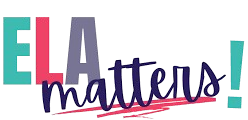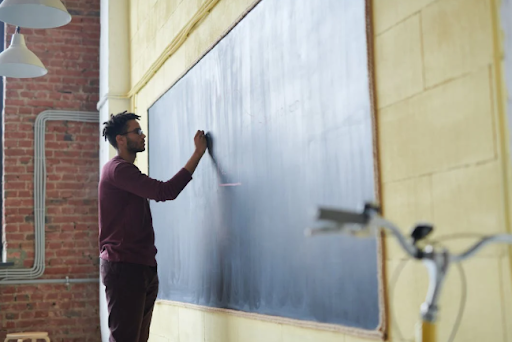Walk into any modern classroom and you’ll see a world that looks nothing like it did a generation ago. Smartboards have replaced chalkboards, tablets have replaced notebooks, and students now search for answers in real time instead of flipping through encyclopedias. The way children learn—and the way teachers teach—has changed dramatically.
For many educators, this shift brings both opportunity and pressure. Technology evolves fast, teaching methods keep changing, and expectations from parents and administrators grow higher every year. Teachers are no longer just instructors; they are mentors, guides, and lifelong learners themselves.
Being a 21st-century educator means adapting to new ideas, adopting new tools, and preparing students for a world that’s constantly changing. But more importantly, it means rethinking what education should achieve and how it connects to real life.
-
Teaching Beyond the Textbook
Traditional teaching once centered around fixed content and a one-size-fits-all curriculum. Today, that model doesn’t work. Information is everywhere—students can find facts online faster than any textbook can provide. What they really need is guidance on how to use that information wisely.
Modern educators focus on teaching skills that last longer than any piece of content: how to think critically, ask questions, and solve problems. Instead of only delivering lessons, teachers help students explore ideas and find connections between subjects. This shift turns classrooms into spaces where curiosity leads learning.
Many teachers strengthen these skills by pursuing masters degrees in education online, which expose them to new teaching models and practical ways to design more engaging lessons. These programs help educators rethink how knowledge is delivered and make learning more meaningful for every student.
By going beyond the textbook, educators help students see learning as something living and relevant, not just a checklist of facts to memorize.
2. Creating Classrooms That Reflect the Real World
Students today live in a world built on teamwork, communication, and creativity. A modern classroom mirrors that world. Group projects, discussions, and hands-on challenges are now central to how learning happens.
Teachers create lessons that prepare students for real-life situations—working in teams, managing time, and solving unfamiliar problems. These experiences teach more than just academic content; they help students practice essential skills that employers value and society needs.
When learning feels meaningful, students stay engaged. They understand that what they’re doing in school connects directly to the world they’ll step into.
3. Embracing Technology Without Losing the Human Touch
Technology can transform learning, but it’s not a replacement for human connection. The best educators use technology as a tool, not a crutch. Digital platforms make lessons interactive and accessible, but they still rely on thoughtful guidance from teachers.
A 21st-century educator knows when to bring in apps, videos, or simulations—and when to set them aside for conversation, collaboration, or reflection. Students still need empathy, encouragement, and real dialogue. Those human moments build trust and motivation in ways technology alone never can.
The goal isn’t to teach with more screens, but to teach better with the tools available.
4. Teaching Students to Learn, Unlearn, and Relearn
Knowledge changes quickly. What’s true today may be outdated tomorrow. That’s why teaching students how to keep learning is more valuable than teaching them what to know.
A 21st-century educator helps students build habits that make them adaptable—questioning information, testing ideas, and adjusting when they find better answers. This approach encourages curiosity instead of certainty.
When students learn how to unlearn and relearn, they become confident in facing change. They don’t just prepare for tests—they prepare for life.
5. Making Learning Inclusive for Every Student
Every classroom is filled with unique learners. Some students grasp concepts visually, others through discussion or practice. Modern educators design lessons that meet these varied needs instead of expecting everyone to learn the same way.
Inclusion also means removing barriers that prevent students from learning—whether those are physical, emotional, or cultural. Teachers now use flexible materials, adaptive technology, and personalized feedback to make sure each student has an equal chance to succeed.
Inclusivity isn’t a trend; it’s a foundation of modern education. It ensures every student feels seen, supported, and capable of growth.
6. Focusing on Emotional Intelligence and Well-being
Modern education recognizes that academic success depends on emotional well-being. A 21st-century educator understands that students bring their whole selves into the classroom — their feelings, challenges, and hopes. Ignoring that emotional layer can make learning harder.
Teachers now work to create classrooms where students feel safe, respected, and heard. They build relationships based on trust and empathy. Simple actions, like checking in with students or encouraging open conversations, make a big difference.
Emotional intelligence helps teachers notice when a student is struggling and respond with care instead of judgment. It also helps students learn how to manage stress, work through conflict, and develop empathy. These skills matter as much as academic knowledge because they shape how students handle life beyond school.
7. Encouraging Student Voice and Agency
In the past, teachers made most of the decisions in the classroom. Now, education is shifting toward giving students more control over their learning. Encouraging student voice means letting them express opinions, make choices, and take ownership of their work.
When students help shape class projects or decide how to demonstrate what they’ve learned, they become more motivated. This approach also builds confidence and responsibility. Teachers still guide and support, but they act more as mentors than directors.
Empowering students doesn’t mean losing structure — it means sharing responsibility for learning. It helps students see education as something they are part of, not something that just happens to them.
Being a 21st-century educator means embracing change instead of resisting it. It’s about guiding students to think deeply, act responsibly, and learn continuously. Modern teachers combine innovation with empathy, technology with humanity, and structure with flexibility.
They are mentors, collaborators, and learners at the same time. Most importantly, they understand that education isn’t just about passing exams — it’s about preparing young people to thrive in a world that never stops evolving.
The role of the educator has never been more important or more dynamic. And for those willing to grow with it, the rewards are not just professional — they are profoundly personal.

